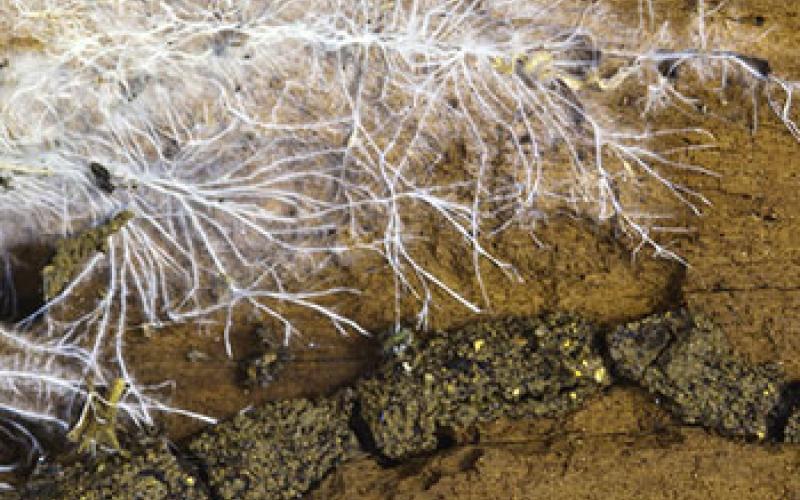Can fungi and trees, working together, slow climate change?

Can fungi and trees, working together, slow climate change?
Can the alliance between trees and fungi reduce climate change effects? A recent study looks at the role of fungi in increasing the ability of trees to take up the potent greenhouse gas, carbon dioxide.
Original Paper:
Terrer, C., et al. "Mycorrhizal association as a primary control of the CO2 fertilization effect." Science. (2016):72-74. DOI: http://dx.doi.org/10.1126/science.aaf4610
With the rapid increase of greenhouse gases into the atmosphere accelerating global climate change, scientists are working to understand the ability of trees to take up carbon dioxide and the influence this could have on the planet. The question is, will trees absorb more carbon dioxide if it is available to them? The answer could determine how we manage forests to mitigate climate change throughout the next century.
Two schools of thought have emerged to answer the question. One states that trees will take up as much carbon dioxide as there is available to them; a theory termed the CO2 enrichment effect. The opposing belief is that nitrogen levels in the environment will limit this process. A study published in Science identifies the relationship between trees and fungi and their ability to buffer climate change through decreasing carbon dioxide in the atmosphere — and attempts to reconcile different conclusions from previous research.
When two recent studies (one led by researchers at the Oak Ridge National Laboratory and the other by Duke University researchers) measured the effect of elevated carbon dioxide on trees, contradictory results were found. To determine why the two studies did not find similar conclusions, César Terrer of Imperial College London in the United Kingdom and his research team looked at the influence of fungi on a tree's ability to take up carbon dioxide. Mycorrhizae are a special type of fungi found on plant roots that are known for their interconnected relationship with trees. The fungi exchanges nitrogen with the host tree which determines how much carbon dioxide the tree can take up. There are two distinct types of mycorrhizae; the first, ectomycorrhizae, has unique characteristics that allow it to easily supply the host tree with nitrogen. Alternatively, the second type, arbuscular mycorrhizae, has a harder time exchanging nitrogen with its host.
The scientists observed a significant increase in the uptake of carbon when nitrogen was readily available in the environment. The next step was to see if this trend carried over in low or limiting nitrogen conditions. They found that trees associated with ectomycorrhizae take up carbon even in low nitrogen environments. This relationship was not observed for the trees associated with arbuscular mycorrhizae, lending a potential explanation for the conflicting study results on carbon uptake in trees.
Ectomycorrhizae has two unique abilities that allow it to take up carbon even in low-nitrogen environments. The fungi provide nitrogen to the tree while the tree provides carbon to the fungi, and they both grow and continue to complete this positive feedback cycle. Additionally, this fungus has the ability to produce special chemicals that break nitrogen into forms the tree can then independently take up through its roots.
If more carbon dioxide is in the atmosphere, will trees absorb it and ultimately slow down climate change? The ability of trees to take up carbon will depend on their access to limiting resources, especially nitrogen. Trees that share a strong alliance with ectomycorrhizae take up as much carbon dioxide as is available to them because they are more likely to have all the nutrients they need to do so. Fortunately, the locations of this harmonious relationship between fungi and plants can be predicted. Future management decisions should focus on protecting areas that are associated with both types of fungi, but primarily ectomycorrhizae to maximize reversing the effects of climate change.




